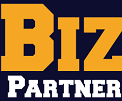May 2, 2024
Tech News
A lawsuit has been filed against Meta Platforms by the Knight First Amendment Institute at Columbia University on behalf of an Amherst professor. The lawsuit questions if Facebook users have the right to control their feeds using external tools, specifically a tool that allows users to unfollow all content fed by Facebook’s algorithm. The case centers on a provision of Section 230 of the 1996 Communications Decency Act, exploring whether users can filter out content they find objectionable.
Anthropic, a leading generative AI startup, has launched a new paid plan for enterprises and a new iOS app. The enterprise plan, named Team, offers higher-priority access to Anthropic’s Claude 3 AI models along with additional admin and user management controls. The iOS app provides access to Claude 3, including free access as well as upgraded Pro and Team access, and features real-time analysis for uploaded and saved images.
The Employees Provident Fund (EPF) in Malaysia has announced the implementation of a new 3-account structure effective from May 11. This structure applies to both mandatory and voluntary contributions, following a 75:15:10 ratio for Akaun Persaraan, Akaun Sejahtera, and Akaun Fleksibel, respectively. The voluntary contribution cap is currently set at RM100,000 per year.
Tech Explained
Section 230 – This section of the Act provides immunity to online platforms from liability for content posted by users. It also allows platforms to moderate content without being held liable for the content they choose to restrict.
Generative AI – Generative AI refers to AI systems that can create new content, such as images, text, or music, based on patterns and data it has been trained on. It is used in various applications, including creative work and problem-solving.
Employees Provident Fund (EPF) – The EPF is a social security organization in Malaysia that manages retirement savings for private sector employees. It requires both employees and employers to contribute a percentage of the employee’s salary to the fund, which can be withdrawn upon retirement or for specific purposes such as housing or education.




